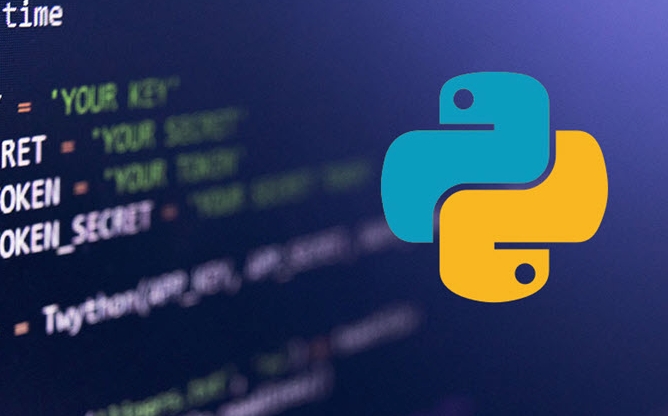The Python dictionary can be sorted by value through the sorted() function and returns the results in the form of a list. 1. Use operator.itemgetter to read highly, and after the operator import itemgetter, it is implemented through sorted(data.items(), key=itemgetter(1)); 2. You can use lambda expressions to not import the module, sorted(data.items(), key=lambda x: x[1]) has the same effect; 3. If dictionary output is required, use dict(sorted_data) to convert the list. Note that the order is only retained in Python 3.7. The old version considers collections.OrderedDict.

Sure, sorting a Python dictionary by value is something you'll probably need to do pretty often. The good news is, it's straightforward once you know the right method.

Use sorted() with operator.itemgetter for clean code
The most common and readable way is to use the sorted() function along with either a lambda or operator.itemgetter . Here's how it works:

- Dictionaries themselves can't be sorted directly, so this method returns a list of tuples.
- You specify that you want to sort by value (which is the second item in each key-value pair).
Example:
from operator import itemgetter
data = {'apple': 3, 'banana': 1, 'cherry': 2}
sorted_data = sorted(data.items(), key=itemgetter(1)) This will give you a list like [('banana', 1), ('cherry', 2), ('apple', 3)] .

If you're working with just the values ??and don't care about keys, you could also extract values ??first using .values() , but that loses the connection between keys and values.
Use a lambda if you prefer not to import anything
If you'd rather avoid importing from the operator module, you can achieve the same result with a lambda function inside sorted() .
This approach might feel more lightweight, especially for small scripts or quick tasks where importing modules feels unnecessary.
Example:
data = {'apple': 3, 'banana': 1, 'cherry': 2}
sorted_data = sorted(data.items(), key=lambda x: x[1]) You get the same result — a list of key-value pairs sorted by value.
It's up to personal preference whether to use itemgetter or a lambda. Both are widely accepted.
What if you want a dictionary back?
After sorting, you'll notice that the result is a list of tuples, not a dictionary. If you want to turn it back into a dictionary (especially in Python 3.7 , where dictionaries preserve insertion order), here's what you do:
sorted_dict = dict(sorted_data)
Just keep in mind:
- This only works after you've already sorted the items.
- The resulting "sorted dictionary" will maintain that order when printed or iterated — but only in Python 3.7 and above.
If you're stuck on an older version or working in a context where order isn't preserved, consider using collections.OrderedDict instead.
That's basically all there is to it. It's not complicated, but it's easy to forget exactly how the syntax works if you don't do it every day.
The above is the detailed content of How to sort a python dictionary by value?. For more information, please follow other related articles on the PHP Chinese website!

Hot AI Tools

Undress AI Tool
Undress images for free

Undresser.AI Undress
AI-powered app for creating realistic nude photos

AI Clothes Remover
Online AI tool for removing clothes from photos.

Clothoff.io
AI clothes remover

Video Face Swap
Swap faces in any video effortlessly with our completely free AI face swap tool!

Hot Article

Hot Tools

Notepad++7.3.1
Easy-to-use and free code editor

SublimeText3 Chinese version
Chinese version, very easy to use

Zend Studio 13.0.1
Powerful PHP integrated development environment

Dreamweaver CS6
Visual web development tools

SublimeText3 Mac version
God-level code editing software (SublimeText3)
 How to handle API authentication in Python
Jul 13, 2025 am 02:22 AM
How to handle API authentication in Python
Jul 13, 2025 am 02:22 AM
The key to dealing with API authentication is to understand and use the authentication method correctly. 1. APIKey is the simplest authentication method, usually placed in the request header or URL parameters; 2. BasicAuth uses username and password for Base64 encoding transmission, which is suitable for internal systems; 3. OAuth2 needs to obtain the token first through client_id and client_secret, and then bring the BearerToken in the request header; 4. In order to deal with the token expiration, the token management class can be encapsulated and automatically refreshed the token; in short, selecting the appropriate method according to the document and safely storing the key information is the key.
 Explain Python assertions.
Jul 07, 2025 am 12:14 AM
Explain Python assertions.
Jul 07, 2025 am 12:14 AM
Assert is an assertion tool used in Python for debugging, and throws an AssertionError when the condition is not met. Its syntax is assert condition plus optional error information, which is suitable for internal logic verification such as parameter checking, status confirmation, etc., but cannot be used for security or user input checking, and should be used in conjunction with clear prompt information. It is only available for auxiliary debugging in the development stage rather than substituting exception handling.
 How to iterate over two lists at once Python
Jul 09, 2025 am 01:13 AM
How to iterate over two lists at once Python
Jul 09, 2025 am 01:13 AM
A common method to traverse two lists simultaneously in Python is to use the zip() function, which will pair multiple lists in order and be the shortest; if the list length is inconsistent, you can use itertools.zip_longest() to be the longest and fill in the missing values; combined with enumerate(), you can get the index at the same time. 1.zip() is concise and practical, suitable for paired data iteration; 2.zip_longest() can fill in the default value when dealing with inconsistent lengths; 3.enumerate(zip()) can obtain indexes during traversal, meeting the needs of a variety of complex scenarios.
 What are Python type hints?
Jul 07, 2025 am 02:55 AM
What are Python type hints?
Jul 07, 2025 am 02:55 AM
TypehintsinPythonsolvetheproblemofambiguityandpotentialbugsindynamicallytypedcodebyallowingdeveloperstospecifyexpectedtypes.Theyenhancereadability,enableearlybugdetection,andimprovetoolingsupport.Typehintsareaddedusingacolon(:)forvariablesandparamete
 What are python iterators?
Jul 08, 2025 am 02:56 AM
What are python iterators?
Jul 08, 2025 am 02:56 AM
InPython,iteratorsareobjectsthatallowloopingthroughcollectionsbyimplementing__iter__()and__next__().1)Iteratorsworkviatheiteratorprotocol,using__iter__()toreturntheiteratorand__next__()toretrievethenextitemuntilStopIterationisraised.2)Aniterable(like
 Python FastAPI tutorial
Jul 12, 2025 am 02:42 AM
Python FastAPI tutorial
Jul 12, 2025 am 02:42 AM
To create modern and efficient APIs using Python, FastAPI is recommended; it is based on standard Python type prompts and can automatically generate documents, with excellent performance. After installing FastAPI and ASGI server uvicorn, you can write interface code. By defining routes, writing processing functions, and returning data, APIs can be quickly built. FastAPI supports a variety of HTTP methods and provides automatically generated SwaggerUI and ReDoc documentation systems. URL parameters can be captured through path definition, while query parameters can be implemented by setting default values ??for function parameters. The rational use of Pydantic models can help improve development efficiency and accuracy.
 How to test an API with Python
Jul 12, 2025 am 02:47 AM
How to test an API with Python
Jul 12, 2025 am 02:47 AM
To test the API, you need to use Python's Requests library. The steps are to install the library, send requests, verify responses, set timeouts and retry. First, install the library through pipinstallrequests; then use requests.get() or requests.post() and other methods to send GET or POST requests; then check response.status_code and response.json() to ensure that the return result is in compliance with expectations; finally, add timeout parameters to set the timeout time, and combine the retrying library to achieve automatic retry to enhance stability.
 Python variable scope in functions
Jul 12, 2025 am 02:49 AM
Python variable scope in functions
Jul 12, 2025 am 02:49 AM
In Python, variables defined inside a function are local variables and are only valid within the function; externally defined are global variables that can be read anywhere. 1. Local variables are destroyed as the function is executed; 2. The function can access global variables but cannot be modified directly, so the global keyword is required; 3. If you want to modify outer function variables in nested functions, you need to use the nonlocal keyword; 4. Variables with the same name do not affect each other in different scopes; 5. Global must be declared when modifying global variables, otherwise UnboundLocalError error will be raised. Understanding these rules helps avoid bugs and write more reliable functions.






